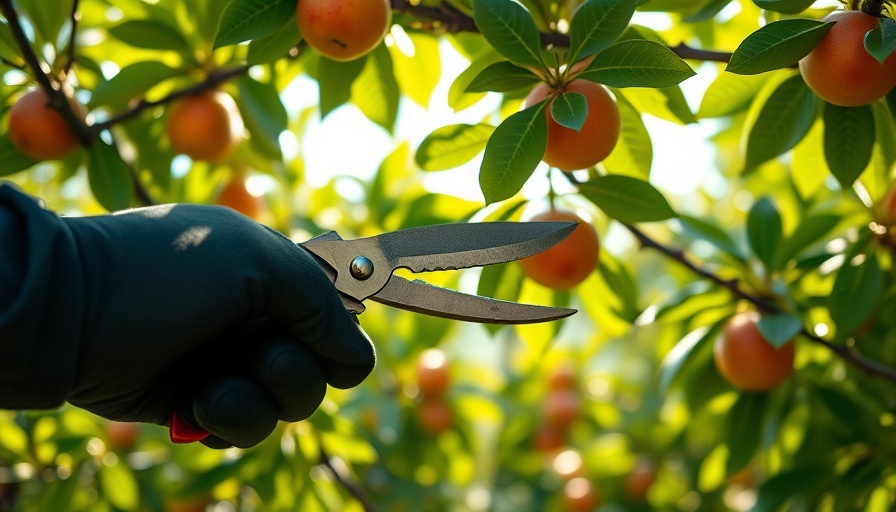
Why Timing Matters: The Case for Post-Harvest Pruning
While the standard advice for pruning fruit trees suggests late winter or early spring, some trees thrive with a different approach. The trees that benefit from post-harvest pruning not only prepare for the next year’s bounty but also remain healthier throughout their growing stages. These trees are not just limited to the traditional temperate varieties; tropical species, commonly found in our backyards, also flourish with this technique. The act of pruning after harvest enables these trees to focus energy on growth and fruit production, enhancing the quality and quantity of fruit in subsequent seasons.
Identify the Ideal Trees for Post-Harvest Pruning
Knowing which trees to prune after harvest ensures that you maximize your orchard's productivity. Some top contenders include:
- Apricot Trees: Best pruned to avoid Eutypa infections, apricots should be addressed after their harvest, which helps maintain their health.
- Lychee Trees: Pruning lychee trees post-harvest ensures better air circulation and sunlight penetration, vital for their growth.
- Fig Trees: These trees benefit from pruning after their fruit is picked, as it encourages new growth.
- Citrus Trees: Post-harvest pruning encourages the growth of healthy branches that are essential for the next season’s fruiting.
Tools and Techniques for Effective Pruning
When tackling a post-harvest pruning session, it’s essential to be equipped with the right tools and knowledge to ensure efficiency. Whether you’re a novice DIY enthusiast or a seasoned gardener, your toolkit ought to include:
- Pruning Shears: For small branches and delicate cuts, these are invaluable.
- Hand Saws: Larger branches might require more robust tools.
- Loppers: For branches that are out of reach, loppers can help you prune without needing to climb.
Always remember to start by removing the three Ds: dead, damaged, and diseased branches. This not only promotes better air circulation but prevents diseases from spreading in your crops.
Understanding the Benefits of Post-Harvest Pruning
Pruning is not merely aesthetic; it carries profound benefits for fruit trees. For instance:
- Enhanced Fruiting: Encouraging new growth leads to improved fruit production.
- Pest and Disease Management: Regular pruning reduces the risk of infestations and infections.
- Improved Airflow and Sunlight: Open canopies facilitate better airflow and light penetration, both crucial for tree vitality.
Get Practical: Pruning Tips for the DIY Gardener
As you embark on your pruning journey, consider these practical tips:
- Preferably, prune on a dry day to reduce the risk of disease.
- Wear safety gear, including gloves and goggles, especially if you're working on higher branches.
- Make clean cuts to ensure faster healing for the tree.
Connecting with Local Expertise
Understanding local climate and soil conditions can be the cornerstone of an effective pruning strategy. In Muskegon, for instance, engaging with local lawn care professionals can provide insights into making your orchard flourish. Northern LawnCare offers expert consultation to help you design a sustainable landscape alongside your pruning decisions, ensuring a fruitful growing season.
With the right timing and technique, your trees can thrive, ensuring rich harvests year after year. For expert guidance, don’t hesitate to reach out to your local landscaping experts. You can find assistance at Norther-LawnCare.com, or call Everett Lucas at 231-450-3414.
 Add Row
Add Row 
 Add
Add 


Write A Comment